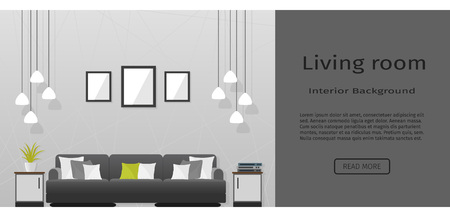Celebrating British Craftsmanship through Sustainable Sourcing
Eco-friendly interior design in the UK has evolved far beyond fleeting trends, now embracing a deep-rooted respect for homegrown materials and local artisanship. By integrating sustainably sourced British wood, metal, and stone, designers not only reduce environmental impact but also champion the unique sensibilities that define British style. This approach celebrates the heritage of regional craftsmanship—think oak from ancient English forests, Cumbrian slate, or hand-forged ironwork from historic workshops—ensuring every interior tells a story steeped in authenticity and character. Opting for locally sourced materials supports smaller communities, preserves traditional skills, and results in interiors that are both environmentally conscious and unmistakably British in their elegance and integrity.
2. Ethically Sourced Timber: Woods Native to the UK
When crafting interiors with a conscience, selecting native British timbers is both a celebration of local heritage and a commitment to sustainability. The UK boasts an array of beautiful, robust woods such as oak, ash, and beech—each offering unique textures and tones that bring warmth and authenticity to eco-friendly spaces.
Why Choose Native Woods?
Utilising woods grown on home soil reduces transportation emissions, supports local forestry management, and preserves traditional British craftsmanship. Choosing timber from well-managed sources ensures longevity in design while minimising environmental impact.
Sustainable Timber Options in the UK
| Wood Type | Key Qualities | Typical Uses | Sustainability Credentials |
|---|---|---|---|
| Oak | Durable, timeless grain, ages beautifully | Flooring, furniture, beams | Widely available from FSC-certified British forests |
| Ash | Light colour, flexible yet strong | Bespoke joinery, cabinetry | Sourced from managed woodlands across England and Wales |
| Beech | Smooth texture, pale hue, easily shaped | Chairs, shelving, kitchenware | Commonly available as reclaimed or certified new timber |
Practical Tips for Sourcing Responsibly
- Look for FSC Certification: The Forest Stewardship Council (FSC) label guarantees your timber comes from responsibly managed British forests.
- Engage with Local Sawmills: Many independent sawmills specialise in locally felled hardwoods and can provide provenance details.
- Embrace Reclaimed Wood: Salvaged timber from historic buildings or decommissioned structures offers character and a reduced carbon footprint.
- Ask Questions: Always inquire about sourcing practices; reputable suppliers are transparent about their supply chains.
A Thoughtful Approach to Timber Selection
The beauty of incorporating native woods lies in their ability to tell a story of place while ensuring each piece contributes positively to the environment. Through careful sourcing—whether by seeking out FSC-certified providers or championing reclaimed materials—you create interiors that embody both sustainability and timeless British style.

3. Repurposed and Recyclable Metals in Modern British Homes
Britain’s long-standing tradition of metalwork offers a rich palette for those seeking eco-friendly interior solutions. In contemporary British homes, the use of recycled metals—such as steel, brass, and iron—has become an essential element in sustainable design. These materials not only reduce the demand for newly mined resources but also bring a unique character to interiors through their inherent patina and history.
The Appeal of Recycled Steel, Brass, and Iron
Recycled steel finds new life as sleek kitchen splashbacks, robust shelving, or statement staircases, while vintage brass fittings add warmth and elegance to lighting fixtures and handles. Iron, celebrated for its durability and industrial charm, is frequently repurposed into table bases or decorative elements. By favouring these metals, homeowners can lower their carbon footprint whilst retaining the timeless appeal of traditional British craftsmanship.
Supporting Local Foundries and Artisans
Collaborating with local foundries not only strengthens community ties but also ensures that each piece carries a distinct British heritage. Many skilled artisans across the UK employ time-honoured techniques to transform salvaged metals into bespoke furniture and architectural details. This commitment to locality reduces transportation emissions and supports small businesses rooted in British metalworking traditions.
Blending Heritage with Modern Sustainability
Integrating repurposed metals into home design bridges the gap between heritage and modern sustainability. Whether it’s an artful wrought iron balustrade rescued from a Victorian terrace or custom-made steel cabinetry crafted by a local blacksmith, these choices celebrate Britain’s industrial past while pushing towards a greener future. Ultimately, sourcing recycled metals for interiors affirms a commitment to both aesthetic integrity and environmental responsibility within the context of contemporary British living.
4. Locally Quarried Stone: Adding Timeless Character
When it comes to eco-friendly British interiors, the use of locally quarried stone offers both aesthetic distinction and a reduced environmental footprint. Opting for homegrown materials such as Cotswold stone, Welsh slate, and Yorkstone not only pays homage to Britain’s rich architectural heritage but also supports sustainable building practices by minimising transport emissions and supporting local communities.
The Allure of British Stone in Interior Design
Cotswold stone, renowned for its honeyed warmth, infuses spaces with rustic charm that feels both inviting and elegant. Welsh slate, with its deep grey-blue hues and natural cleft texture, lends a contemporary edge to fireplaces and accent walls. Meanwhile, Yorkstone is celebrated for its durability and subtle variations in tone—ideal for robust flooring that withstands the test of time. Using these stones connects your interior to centuries-old craftsmanship while ensuring each space carries an unmistakable sense of place.
Environmental Merits of Local Sourcing
By sourcing stone from within Britain, homeowners benefit from a reduced carbon footprint compared to imported alternatives. Local quarries adhere to UK regulations on responsible extraction and land rehabilitation, ensuring minimal ecological disruption. Additionally, the longevity and low-maintenance nature of these stones means fewer replacements over time, further reducing waste.
Comparing Key British Stones for Interior Applications
| Stone Type | Origin | Best Uses | Aesthetic Appeal | Sustainability Benefits |
|---|---|---|---|---|
| Cotswold Stone | Gloucestershire & Oxfordshire | Feature walls, fireplaces | Warm, golden tones; rustic character | Local extraction; low transport emissions |
| Welsh Slate | North Wales | Floors, hearths, accent walls | Sleek, blue-grey finish; modern or traditional look | Durable; long-lasting; quarry restoration practices |
| Yorkstone | Yorkshire & Lancashire | Flooring, patios, steps | Earthy shades; textured surface; timeless appeal | Reclaimed options available; regional availability reduces impact |
Cultivating a Sense of Place and Responsibility
Selecting Cotswold stone, Welsh slate, or Yorkstone for your interiors does more than enhance visual harmony—it tells a story rooted in local identity and conscious living. Whether you’re restoring a Georgian townhouse or reimagining a modern flat, integrating locally sourced stone ensures every element honours Britain’s enduring design legacy while safeguarding its future landscapes.
5. The Art of Upcycling: Vintage Finds and Salvage Yards
Embracing the art of upcycling is a quintessentially British approach to sustainable interior design, blending heritage with environmental consciousness. Across the UK, salvage yards, auctions, and antique shops brim with characterful materials—weathered oak beams from countryside barns, wrought iron gates from Victorian terraces, or Cornish slate tiles. These forgotten gems hold immense potential for creating one-of-a-kind eco-friendly interiors.
Unearthing Character at Local Salvage Yards
British salvage yards are treasure troves for the sustainably minded designer. Reclaimed wood from demolished townhouses can become rustic kitchen islands or bespoke shelving. Discarded metal railings might be transformed into statement stair balustrades, while old stone slabs can form dramatic hearths or garden features. Each piece carries its own story, infusing spaces with a sense of history and authenticity that new materials simply cannot replicate.
Auctions and Antique Shops: A Source of Inspiration
Scouring local auctions and antique shops yields finds such as Georgian pine doors or Edwardian fireplace surrounds. These items, lovingly restored, not only reduce demand for new resources but also celebrate British craftsmanship through the ages. Mixing eras—a mid-century sideboard paired with industrial steel stools—results in an eclectic, layered look that feels organic and lived-in.
Designing with a Conscious Heart
The beauty of upcycling lies in its flexibility and creativity. Timber offcuts can be pieced together as parquet flooring; old scaffolding boards become striking headboards or dining tables. By repurposing these elements, homeowners significantly lower their carbon footprint while cultivating interiors rich in texture and soul. In Britain’s ever-evolving homes—from London flats to Cotswold cottages—the practice of upcycling ensures sustainability never means sacrificing style or comfort.
6. Blending Sustainability with Classic British Aesthetics
Achieving eco-friendly interiors in Britain doesn’t mean sacrificing heritage or style. In fact, integrating sustainable wood, metal, and stone into your home offers a unique opportunity to celebrate both environmental responsibility and quintessential British design. Whether you’re renovating a rustic countryside cottage or updating a sleek London flat, the art lies in harmonising green materials with classic aesthetics.
Celebrating Timeless Character with Sustainable Choices
For period properties, such as Georgian terraces or Victorian townhouses, sourcing reclaimed timber for floorboards and beams can retain that timeworn elegance while reducing environmental impact. Opt for FSC-certified oak or chestnut for panelling and furniture – these native species complement historic schemes and are readily available from ethical suppliers. Pairing patinated recycled metal fixtures with original features, like fireplaces or cornicing, adds depth without overpowering the room’s character.
Countryside Cottages: Warmth & Whimsy
In rural settings, embrace the beauty of natural imperfections by choosing locally quarried stone for hearths or exposed walls. Salvaged slate tiles and hand-forged ironmongery evoke a sense of place and history. Layer tactile textiles—such as organic wool throws—and vintage ceramics atop these robust foundations for interiors that feel both inviting and sustainable.
Contemporary City Flats: Sleek Meets Sustainable
For urban spaces, the fusion of clean lines with eco-friendly materials is key. Consider engineered wood flooring made from fast-growing species like ash or birch, finished in subtle stains to reflect London’s understated elegance. Polished recycled steel accents—think bespoke lighting or minimalist hardware—provide an industrial edge, while composite stone surfaces offer durability without compromising on visual impact.
Mixing Old and New
The secret to seamless integration lies in balance: juxtapose modern eco-materials with antique pieces sourced from local markets or upcycled finds. Use colour palettes inspired by the British landscape—moody greys, moss greens, and soft earth tones—to tie together disparate elements. This approach not only reduces waste but also tells a story unique to your home.
Ultimately, blending sustainability with classic British aesthetics is about thoughtful selection and sensitive layering. By prioritising ethically sourced wood, metal, and stone, you honour both tradition and the future—creating interiors that are every bit as enduring as they are beautiful.


